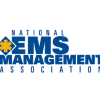This article originally appeared in the June 2017 newsletter of the National EMS Management Association and is republished here with permission.
By Mark Flauter, EMT-P
Computerized documentation is commonplace in EMS in 2017. It’s difficult to find a service that isn’t using a documentation program to prepare an electronic patient care report (ePCR) or electronic health record (EHR). Just as there are a variety of EMS providers, there are a variety of documentation programs. Most of the key information required by the individual states is contained in each program, but the layouts of the programs are different. There are features to seek from each individual program to make sure the report is as thorough and complete as possible.
1. Ability to work offline and online
First, the program must have the ability to run both a mobile application and a web interface. The mobile application should have the ability to store and forward information for when there isn’t connectivity. The providers can continue to write their report even in a wireless dead spot.
The program should also be able to synchronize a report from the mobile application to the web. This gives the provider the ability to stop and start a report without difficulty or losing the information on the report is dispatched on another call and starting another report. It also allows employees to sit at a desk to complete a report or go back to amend a report if they get updated information, such as demographic information on a person found unresponsive by the side of the road.
2. Ability to help complete the chart
Second, all the applicable fields of the report should be filled. If there is a specific fillable field, then all areas of that field should be completed. A field that’s not filled can give the reader the impression that component wasn’t considered or addressed. It will also necessitate the reader to search other areas of the report (i.e., narrative) for the missing information.
Simply marking the field as “Other,” with support in the narrative, or “N/A” can let the reader know the provider addressed that field. It also lends to consistency in the report, especially if there are multiple areas of the report where information can be entered, such as an interpretation of an ECG rhythm.
3. Ability to integrate with other devices
Third is the ability to import information into the report from other sources. The ability to import information from a cardiac monitor (i.e. rhythm strips, vital signs, medications administered) using a Bluetooth or hardwire connection is a feature that benefits the paramedics preparing the report. Depending on the hardware being used, pictures of the scene or patient insurance cards can be taken with the computer. Those pictures can be attached to or included in the report.
4. Ability to customize forms
Fourth is the ability to load and use fillable “custom forms.” Many programs allow for a specific form, such as a refusal of treatment and/or transport form, to be included in the report, and this form can be filled or signed by the patient and crew. It can also be tailored to cover all the information that medical direction wants relayed to the patient who is refusing.
5. Ability to provide clinical feedback
Fifth is a Quality Improvement/ Quality Management (QI/QM) module with the ability to use the program to message between field paramedics and the administration doing the QI/QM. The reviewer can send notes on the report to the provider who wrote it. When the provider signs into the mobile app, the message should be visible somewhere on the home screen.
6. Ability to improve documentation
Lastly, there are several features the program should have for the most thorough documentation of the patient’s injuries, illness, and assessment. Use of an anatomical diagram to document injuries is included in most programs, but can be an underutilized field. All injuries should be depicted and described. If treatment isn’t indicated, it should be explained as such. The ability to scan a driver’s license or identification card for import of demographic information is a nice feature that can be beneficial when the patient’s mental status is decreased and there is no one around to provide identification of the patient. Finally, the ability to spell check the narrative is available on almost all programs, but a medical spell check can be a nice feature to add to a program for a few extra dollars.
These are just a few things to keep in mind when looking a new ePCR or EHR program or to best optimize the program currently in use at your service.
About the author
Mark Flauter, EMT-P, is chief medical officer, Florissant Valley Fire Protection District.













